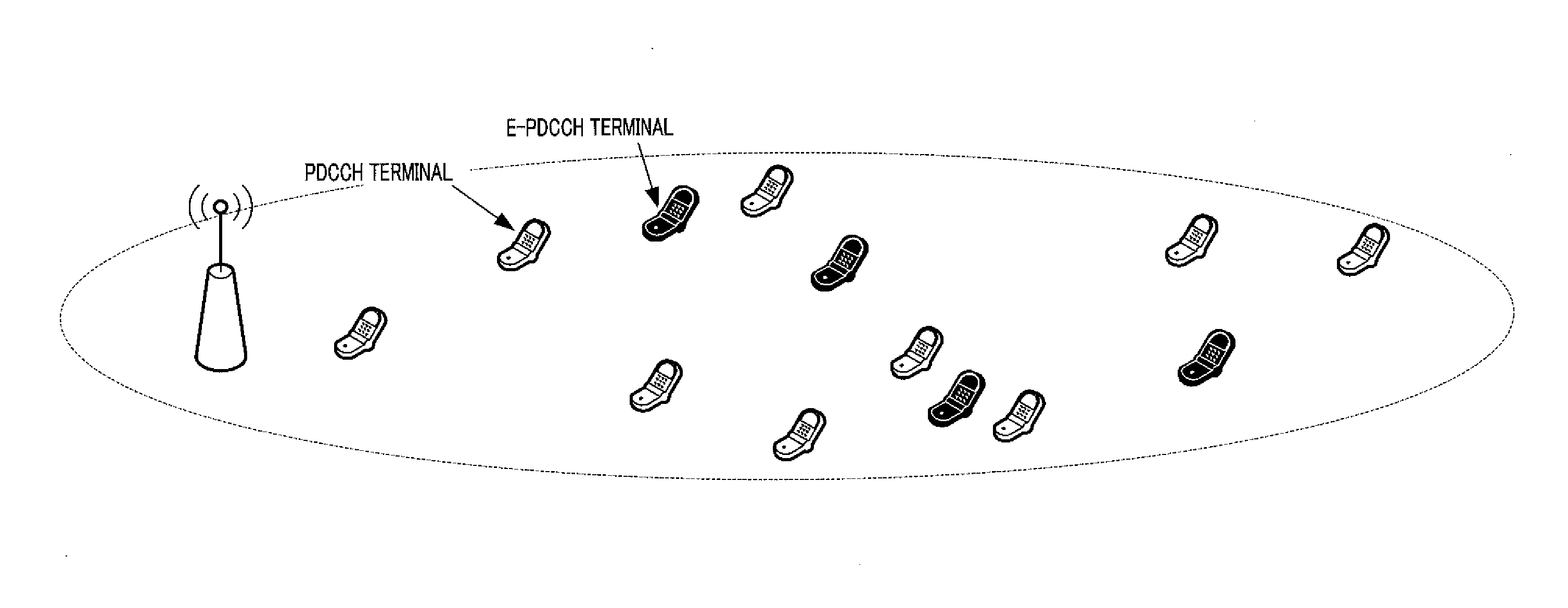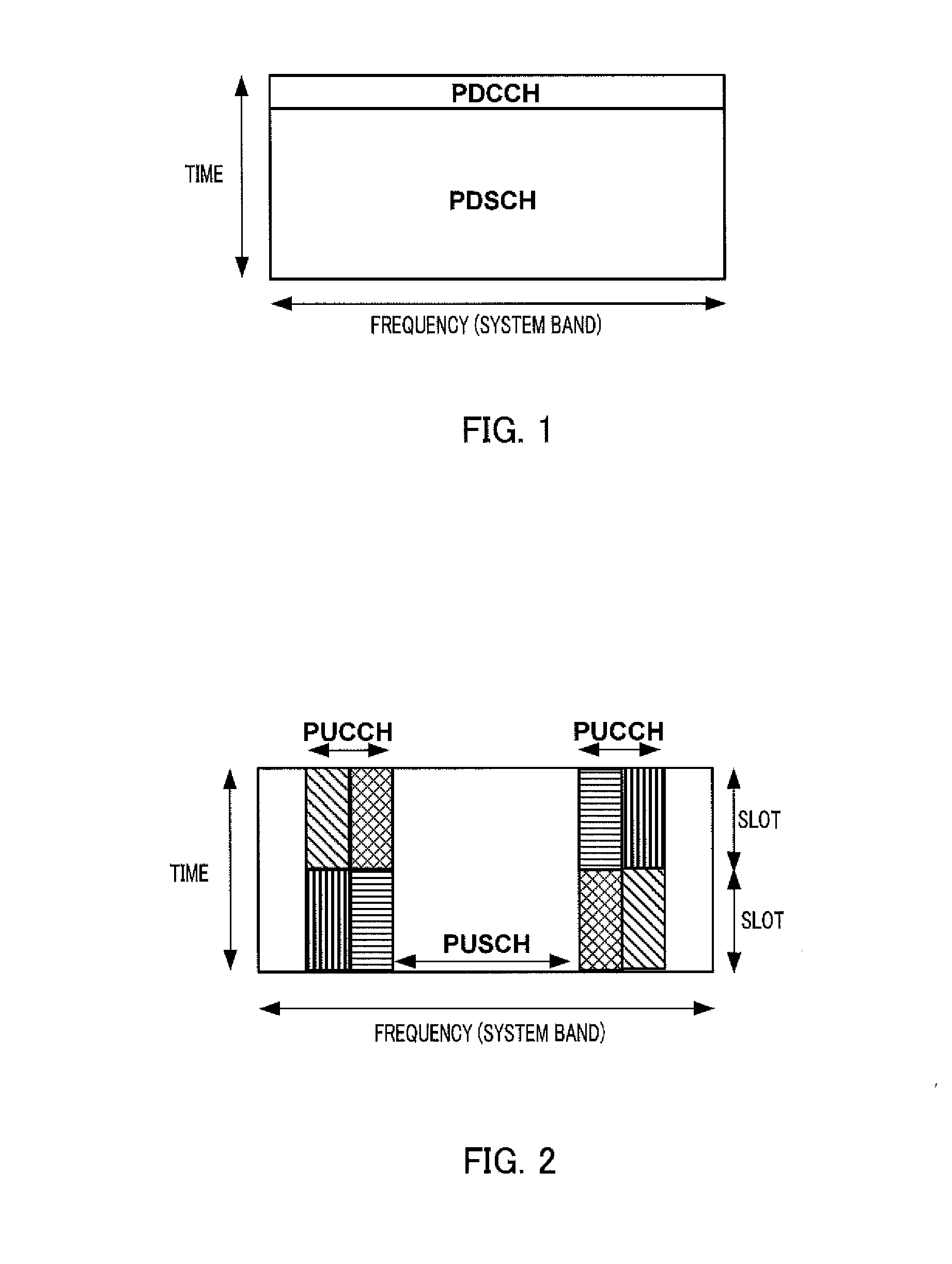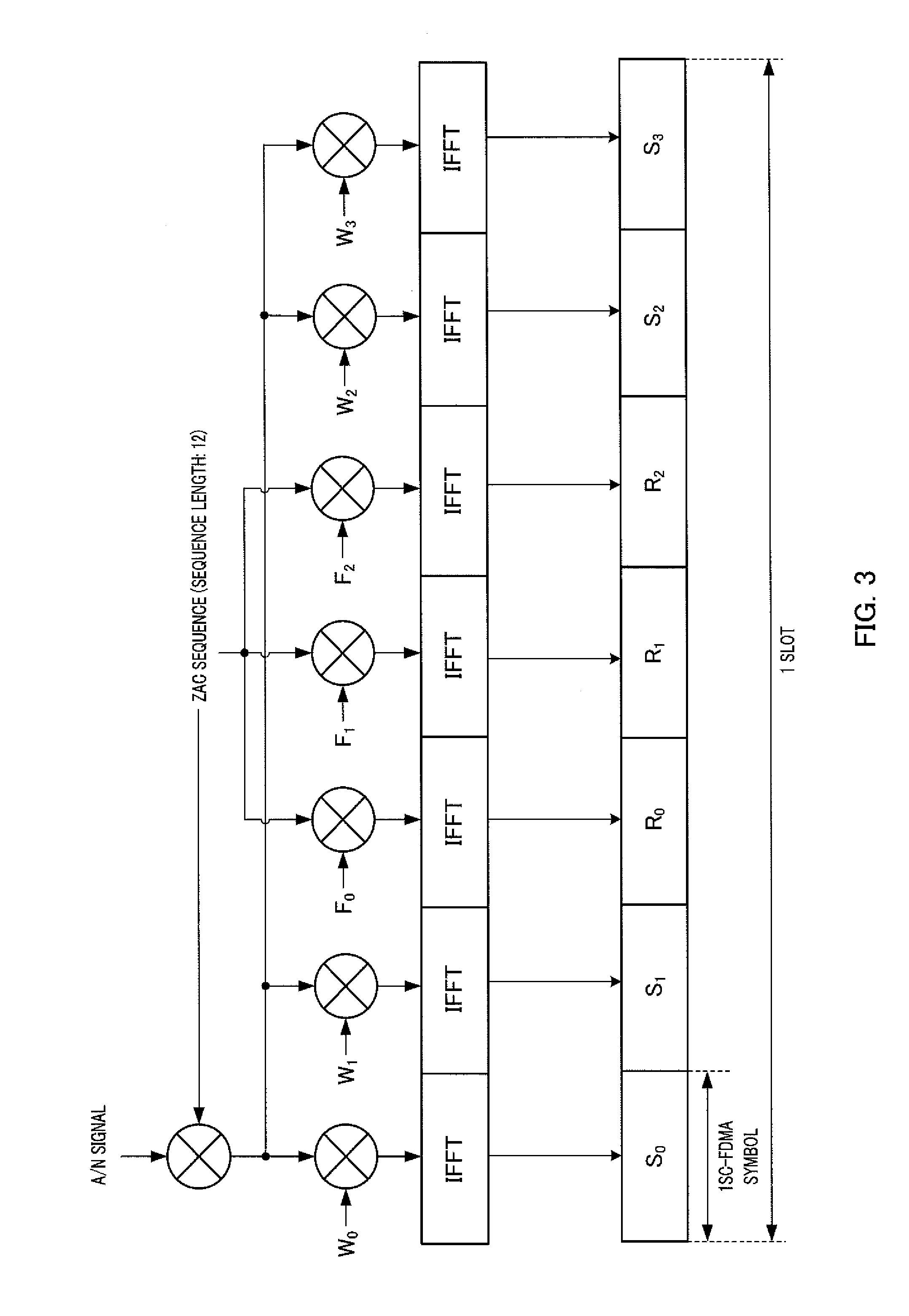Wireless communications terminal, base station device, and resource allocation method
a technology of wireless communication and base station devices, applied in the direction of wireless communication, transmission path sub-channel allocation, digital transmission, etc., can solve problems such as retransmission of data, achieve the effect of avoiding collision between a/n signals, avoiding unnecessary reduction of pusch bands, and increasing a/n resource utilization efficiency
- Summary
- Abstract
- Description
- Claims
- Application Information
AI Technical Summary
Benefits of technology
Problems solved by technology
Method used
Image
Examples
embodiment 1
Background of Obtaining an Embodiment of the Present Invention
[0055]First, before describing the specific configuration and operation of Embodiment 1, one method that the inventors of the present invention have noticed as a method for allocating A / N resources in the case of adopting the E-PDCCH will be described.
[0056]FIG. 4 shows an example of the downlink subframe at the time of E-PDCCH transmission. FIG. 5 shows the system configuration when E-PDCCH is adopted.
[0057]As shown in FIG. 5, in a communication system adopting the E-PDCCH, it is expected that PDCCH terminals and E-PDCCH terminals are mixed within one cell (the E-PDCCH terminals in FIG. 5 being shown in black). In this case, a PDCCH terminal is a terminal that receives PDCCH control information for controlling its communication, and an E-PDCCH terminal is a terminal that receives E-PDCCH control information for controlling its communication.
[0058]The E-PDCCH has the following features.
[0059](1) Unlike the PDCCH, which is...
embodiment 2
Background of Obtaining an Embodiment of the Present Invention
[0175]First, before describing the specific configuration and operation of Embodiment 2, one method that the inventors noticed as a method for allocating A / N resources in the case of adopting the E-PDCCH will be described.
[0176]The CoMP scenario 4 is operation that is expected to increase the number of terminals in the coverage area, using E-PDCCH. FIG. 14 shows an example of the configuration of a communication system adopting CoMP scenario 4. First, at this point an example in which no E-PDCCH is used is shown. A plurality of pico nodes are placed within a cell of a macro base station that forms a large cell (in CoMP scenario 4, a macro base station being hereafter called a macro node and a pico base station being hereafter called a pico node). In CoMP scenario 4, these nodes are operated by a single cell ID. In this CoMP scenario 4, because cooperative transmission on the downlink and cooperative reception on the uplin...
PUM
 Login to View More
Login to View More Abstract
Description
Claims
Application Information
 Login to View More
Login to View More - R&D
- Intellectual Property
- Life Sciences
- Materials
- Tech Scout
- Unparalleled Data Quality
- Higher Quality Content
- 60% Fewer Hallucinations
Browse by: Latest US Patents, China's latest patents, Technical Efficacy Thesaurus, Application Domain, Technology Topic, Popular Technical Reports.
© 2025 PatSnap. All rights reserved.Legal|Privacy policy|Modern Slavery Act Transparency Statement|Sitemap|About US| Contact US: help@patsnap.com



